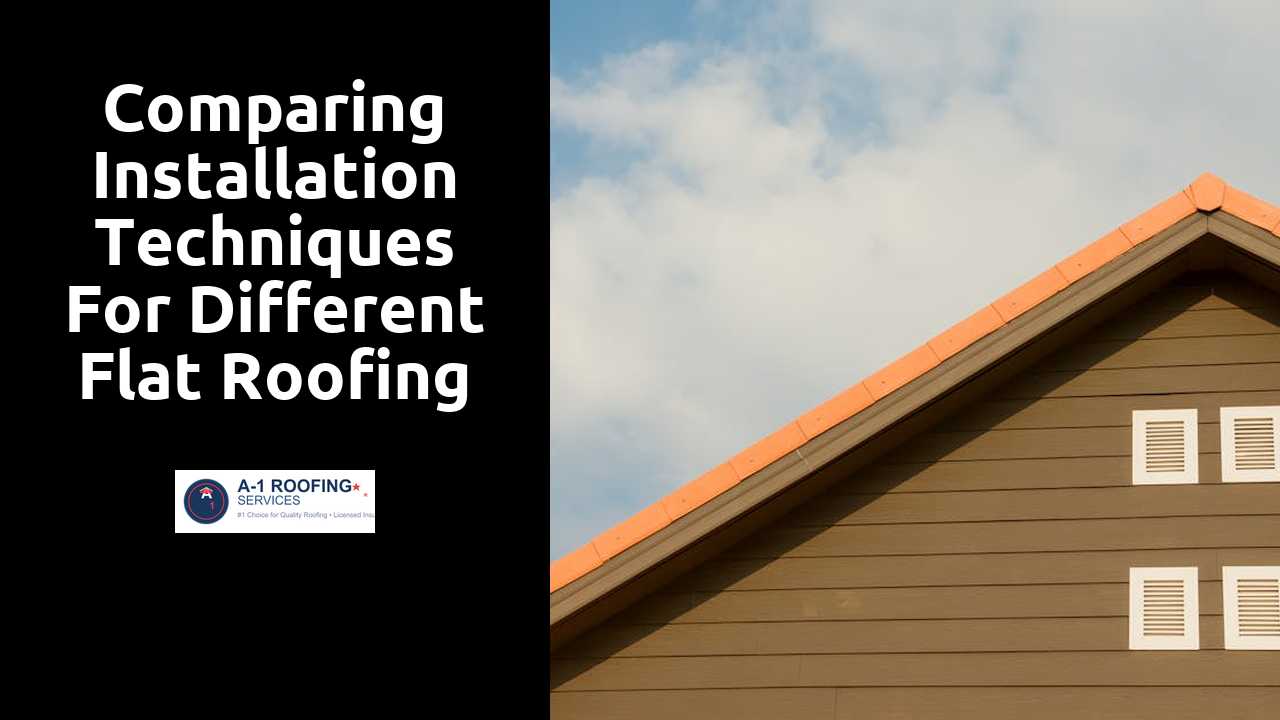
Comparing Installation Techniques for Different Flat Roofing Materials
Table Of Contents
Green Roofing Installation Approaches
The installation of green roofs involves several fundamental approaches, each offering distinct benefits and challenges. One common method is the extensive green roof system, which is lightweight and primarily populated with drought-resistant plants. This approach requires less maintenance and is often suitable for urban environments. On the other hand, intensive green roofs are heavier and support a wider variety of vegetation, including shrubs and small trees. These systems demand more structural support and maintenance but offer greater versatility for landscape design.
Preparation of the roof structure is crucial regardless of the chosen approach. A proper waterproofing membrane must be laid down to prevent leaks and damage to the underlying building. Drainage systems are essential to manage excess water and protect plants from rot. Additionally, the choice of growing medium and plant species should align with the specific microclimate of the roof. Proper installation techniques also require consideration of irrigation systems to maintain plant health during dry periods, ensuring the longevity and effectiveness of the green roof.
Their blog is a great resource for information.
Considerations for Installing a Green Roof
Selecting the right location for a green roof is essential. The roof’s structure must support the added weight of soil and plants. An assessment of the building’s load-bearing capabilities is vital. Local climate plays a significant role in plant selection and overall roof design. Understanding sunlight exposure and wind patterns can help in choosing suitable vegetation that thrives in those conditions.
Maintenance requirements should be part of the planning process. Regular inspections are necessary to ensure the health of the plants and the integrity of the roofing system. Irrigation needs will vary according to plant types and local rainfall patterns. Incorporating a drainage system can help prevent waterlogging and root rot. Finally, accessibility for maintenance is important to keep the green roof in optimal condition.
Metal Flat Roof Installation Techniques
Metal flat roofs are increasingly popular due to their durability and aesthetic appeal. Installation often begins with a careful assessment of the building structure to ensure it can support the weight of the chosen metal material. Proper surface preparation is essential, which may involve cleaning and ensuring the flat surface is free from debris. Once the surface is prepared, the metal panels are typically laid down starting from the roof's edge, allowing for proper overlap between adjacent panels to promote effective water drainage.
Fastening methods play a crucial role in ensuring the longevity of metal roofs. Options can include mechanical clips or adhesive systems, depending on the specific design and environmental factors. It is important to account for thermal expansion, thus allowing some movement within the fastening points without compromising the roof’s integrity. All seams must be adequately sealed to prevent leaks. A thorough inspection of the completed installation guarantees compliance with industry standards and enhances the roof's lifespan.
How to Properly Install Metal Roofing
Proper installation of metal roofing requires careful planning and execution to ensure longevity and performance. Begin by selecting the appropriate materials, which can include galvanized steel, aluminum, or copper, depending on factors such as climate, aesthetics, and budget. Before installation, it's essential to prepare the roof deck, ensuring it is clean and free of debris. Ensuring proper alignment and fixing points will prevent future issues with water infiltration or structural integrity.
Once the deck is ready, start by laying down a moisture barrier to protect against condensation and leaks. Metal panels should be secured using screws designed specifically for this purpose, with proper spacing to accommodate thermal expansion. Overlap adjacent panels according to manufacturer recommendations to ensure a tight seal. Pay special attention to flashing and trim pieces around chimneys, vents, and eaves, as these areas are crucial for preventing water penetration and enhancing durability.
Built-Up Roofing (BUR) Application
This roofing method involves the use of multiple layers of bitumen and reinforcing fabrics. The process begins with applying a base sheet or ply over the insulation and substrate. Next, layers of hot asphalt or cold adhesive bond the felt sheets together. This multilayer system can enhance durability and waterproofing. The application of a final top layer provides further protection from UV rays and environmental stresses.
Careful attention must be paid to the seams and edges during installation. Overlapping sheets correctly is essential for preventing leaks. Workers should ensure that the surface is clean and dry before application. Tools like rollers and trowels help to achieve a smooth finish. Once installed, maintenance of a built-up roof should focus on regular inspections and prompt repairs of any damage to maintain its longevity.
Layering Techniques for Built-Up Roofing
Built-Up Roofing (BUR) systems rely heavily on the proper application of multiple layers to achieve durability and weather resistance. Typically, this involves alternating layers of bitumen or asphalt and reinforcing fabrics. The number of layers can vary based on the specific needs of a building, but standard installations typically include at least two or three plys. These layers are bonded together, creating a cohesive membrane that offers excellent waterproofing capabilities. Properly adhering each layer is critical to avoid issues such as blistering or leaks.
When applying BUR, attention must be paid to the substrate to ensure it is clean and properly prepared. Any debris or moisture can compromise the effectiveness of the layers. Once the initial layer is laid, subsequent layers should be staggered to enhance the overall strength of the roofing system. This staggered approach helps distribute stress more evenly across the surface, mitigating potential points of failure. A final layer is often topped with a protective granule surface or a reflective coating to enhance durability against UV rays and harsh weather conditions.
Related Links
Safety Precautions during Flat Roofing InstallationsBest Practices for Insulating Flat Roof Structures